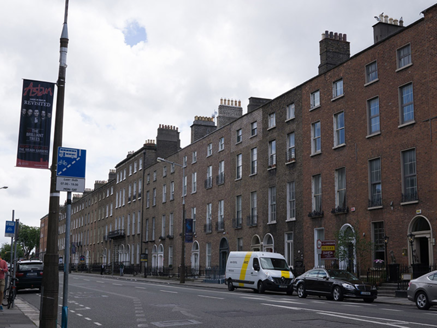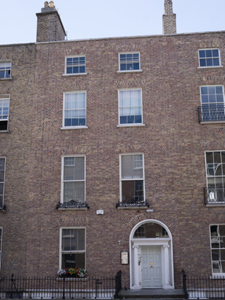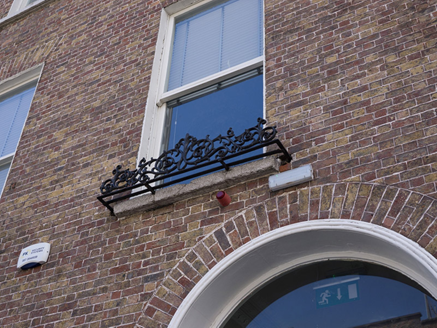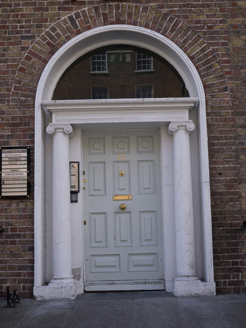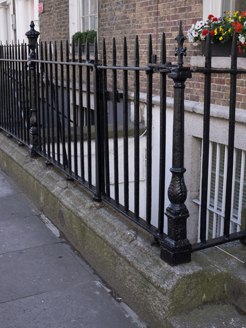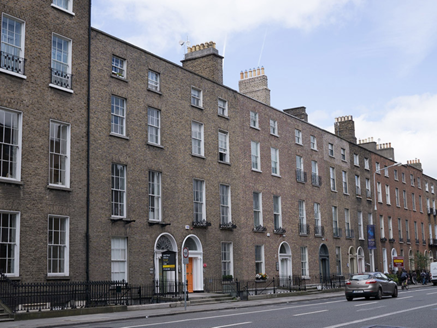Survey Data
Reg No
50110503
Rating
Regional
Categories of Special Interest
Architectural, Artistic
Original Use
House
In Use As
Office
Date
1820 - 1840
Coordinates
316308, 232892
Date Recorded
25/06/2017
Date Updated
--/--/--
Description
Terraced two-bay four-storey former house over basement, built c. 1830, now in use as offices. M-profile hipped slate roof, concealed behind red brick parapet with granite coping. Red brick chimneystacks having clay pots. Red brick, laid in Flemish Bond, to walls, with cut granite plinth course over lined-and-ruled rendered walls to basement. Square-headed window openings having granite sills and rendered reveals, three-over-three pane, six-over-six pane and one-over-one pane timber sliding sash windows. Decorative cast-iron balconettes to first floor windows to front. Square-headed window opening with cut granite Gibbsian surround and ten-over-ten pane timber sliding sash window having wrought-iron security rail to basement. Round-headed door opening with moulded render surround. Doorcase comprising Ionic columns and entablature. Plain fanlight and timber panelled door. Granite steps having mounts for wrought-iron boot-scrape to platform. Wrought-iron railings with cast-iron corner posts with urn and fleur-de-lis finials, set on carved granite plinth wall to front.
Appraisal
No. 32 retains many historic features which enhance the classically proportioned façade and add architectural interest. The metalwork attests to the quality of architectural ironmongery from the 1800s. Forming part of the set-piece of Leeson Street Lower, this house contributes to the overall striking impression created by the continuity of this important Georgian thoroughfare, leading from St. Stephens Green towards Donnybrook. Originally called Suesey Street, it was renamed Leeson Street in 1728 to commemorate the Leeson brewing family. The street owes much of its character to townhouses built for Lord Dunboyne, the Duke of Ormonde.
